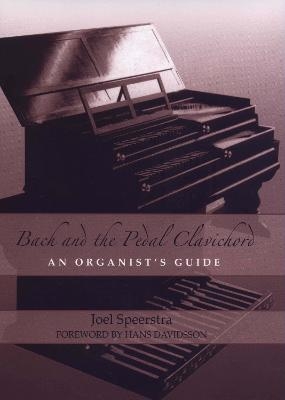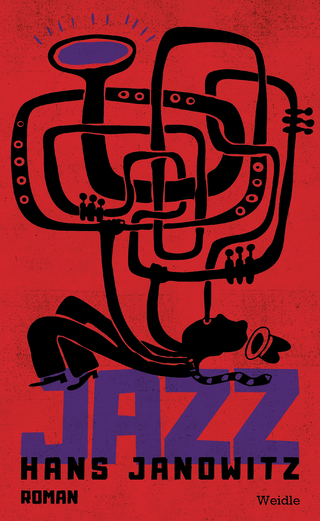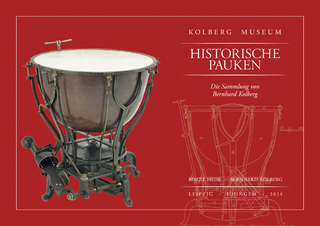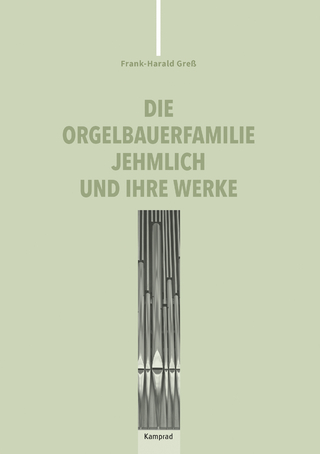
Bach and the Pedal Clavichord
An Organist's Guide
Seiten
2004
University of Rochester Press (Verlag)
978-1-58046-135-1 (ISBN)
University of Rochester Press (Verlag)
978-1-58046-135-1 (ISBN)
An examination of the role of the pedal clavichord in understanding the work of J. S. Bach, as well as its relevance to contemporary organ performances.
Friederich Griepenkerl, in his 1844 introduction to Volume 1 of the first complete edition of J. S. Bach's organ works, wrote: "Actually the six Sonatas and the Passacaglia were written for a clavichord with two manuals and pedal,an instrument that, in those days, every beginning organist possessed, which they used beforehand, to practice playing with hands and feet in order to make effective use of them at the organ. It would be a good thing to let suchinstruments be made again, because actually no one who wants to study to be an organist can really do without one."
What was the role of the pedal clavichord in music history? Was it a cheap practice instrument for organistsor was Griepenkerl right? Was it a teaching tool that helped contribute to the quality of organ playing in its golden age? Most twentieth-century commentary on the pedal clavichord as an historical phenomenon was written in a kindof vacuum, since there were no playable historical models with which to experiment and from which to make an informed judgment.
At the heart of Bach and the Pedal Clavichord: An Organist's Guide are some extraordinary recentexperiments from the Göteborg Organ Art Center [GOArt] at Göteborg University. The Johan David Gerstenberg pedal clavichord from 1766, now in the Leipzig University museum, was documented and reconstructed; the new copy was thenused for several years as a living instrument for organ students and teachers to experience. On the basis of these experiments and experiences, the book explores, in new and artful ways, Bach's keyboard technique, a technique preserved by his first biographer, J. N. Forkel [1802], and by Forkel's own student, Griepenkerl.
Friederich Griepenkerl, in his 1844 introduction to Volume 1 of the first complete edition of J. S. Bach's organ works, wrote: "Actually the six Sonatas and the Passacaglia were written for a clavichord with two manuals and pedal,an instrument that, in those days, every beginning organist possessed, which they used beforehand, to practice playing with hands and feet in order to make effective use of them at the organ. It would be a good thing to let suchinstruments be made again, because actually no one who wants to study to be an organist can really do without one."
What was the role of the pedal clavichord in music history? Was it a cheap practice instrument for organistsor was Griepenkerl right? Was it a teaching tool that helped contribute to the quality of organ playing in its golden age? Most twentieth-century commentary on the pedal clavichord as an historical phenomenon was written in a kindof vacuum, since there were no playable historical models with which to experiment and from which to make an informed judgment.
At the heart of Bach and the Pedal Clavichord: An Organist's Guide are some extraordinary recentexperiments from the Göteborg Organ Art Center [GOArt] at Göteborg University. The Johan David Gerstenberg pedal clavichord from 1766, now in the Leipzig University museum, was documented and reconstructed; the new copy was thenused for several years as a living instrument for organ students and teachers to experience. On the basis of these experiments and experiences, the book explores, in new and artful ways, Bach's keyboard technique, a technique preserved by his first biographer, J. N. Forkel [1802], and by Forkel's own student, Griepenkerl.
The Historical Pedal Clavichord
J.S. Bach's Trip Sonatas: A Reception History of a Rumor
Reconstructing the Gerstenberg Pedal Clavichord
J.S. Bach and the Clavichord: A Reception History of a Technique
Performance Practice at the Pedal Clavichord
Musica Poetica and Figural Notation
J.S. Bach's Passacaglia in C Minor, BWV 582: A Case Study
The Pedal Clavichord and the Organ in Dialogue
| Erscheint lt. Verlag | 3.3.2005 |
|---|---|
| Reihe/Serie | Eastman Studies in Music |
| Zusatzinfo | 10 b/w illus. |
| Verlagsort | Rochester |
| Sprache | englisch |
| Maße | 152 x 229 mm |
| Gewicht | 472 g |
| Themenwelt | Kunst / Musik / Theater ► Musik ► Instrumentenkunde |
| Kunst / Musik / Theater ► Musik ► Klassik / Oper / Musical | |
| ISBN-10 | 1-58046-135-2 / 1580461352 |
| ISBN-13 | 978-1-58046-135-1 / 9781580461351 |
| Zustand | Neuware |
| Haben Sie eine Frage zum Produkt? |
Mehr entdecken
aus dem Bereich
aus dem Bereich
Roman
Buch | Hardcover (2024)
Wallstein Erfolgstitel - Belletristik und Sachbuch (Verlag)
20,00 €
die Sammlung von Bernhard Kolberg
Buch | Hardcover (2024)
E Reinhold (Verlag)
39,00 €


